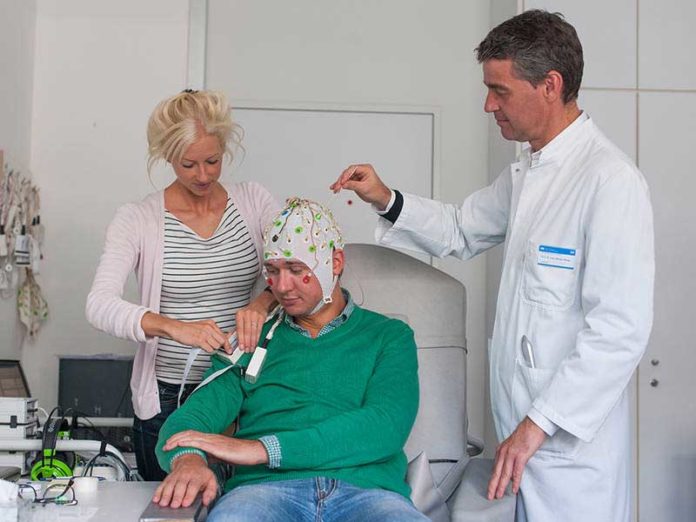Pain is an unpleasant sensory and emotional experience associated with actual or potential tissue damage.
In a new study, scientists for the first time investigated in detail how a painful event is processed in the brain. They found that brain yields at least three different responses to a painful stimulus and that these responses are simultaneous and independent of one another. The results may have fundamental repercussions for the understanding of pain and treatment of pain patients.
Pain embodies at least three factors: Perception of pain, an action such as withdrawing the hand from a hot stove, and a response of the autonomic nervous system which provides the necessary energy for the action.
For the study, scientists applied short pain stimuli of varying strengths to the back of the hand of healthy volunteers. They then determined the perception of pain based on the participant’s evaluation of the stimulus on a rating scale.
Here, scientists found the action component based on the reaction time the subjects needed to withdraw their fingers in response to the stimulus. Next, scientists quantified sweat production at the interior surface of the hand to observe the response of the autonomic nervous system.
By using electroencephalography (EEG) technique, scientists tracked brain activity to get precise information on when and how nerve cells react to pain stimuli.
Scientists applied a statistical method known as mediation analysis to the data. Using this, they were able to find out which brain responses serve the three pain components, and when exactly they take place.
Laura Tiemann, the study’s lead author said, “For the first time we were able to see that the brain responses to the pain components did not take place one after the other, but rather in part simultaneously. This means that the preparation for action and the provision of energy are not entirely dependent on the perception of pain; instead, they are in part triggered independently of one another.”
Markus Ploner, Heisenberg Professor for Human Pain Research said, “These findings could be of great importance to patients suffering from chronic pain. Ploner recommends considering all three components of pain in comprehensive pain therapy. For chronic pain patients, it is possible that not only the perception of pain but also the preparation and performance of actions against pain and the provision of the energy to do so are changed.”
“Our findings are thus a biological argument for holistic pain therapy approaches that take different pain components into account. Such approaches would include psychotherapy and drug therapy as well as physiotherapy. This kind of therapy, referred to as Multimodal Pain Therapy, is already being offered at the TUM Interdisciplinary Center for Pain Medicine.”
The study is published in the journal Nature Communications.
